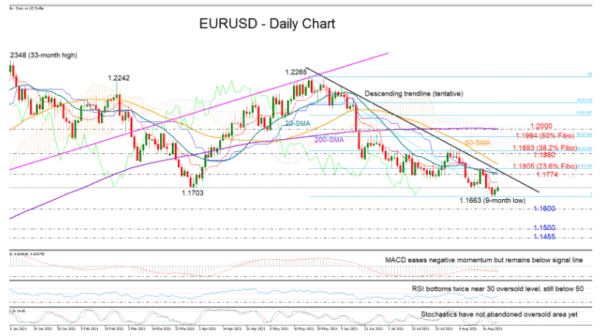EURUSD is pushing for a rebound after its latest downfall snapped the March trough of 1.1703 to mark a new lower low at 1.1663, the lowest since November 2020.
Despite the bullish appetite in the price, the technical indicators cannot guarantee any sustainable recovery in the market yet. The RSI has bottomed twice near its 30 oversold mark, but it continues to fluctuate within the bearish area, while the Stochastics haven’t officially abandoned the oversold region yet. Likewise, the MACD, although somewhat stronger, remains below its red signal line, while the Ichimoku indicators show no effort in correcting their recent bearish intersection.
Hence, the 20-day simple moving average (SMA) and the tentative descending trendline drawn from the 1.2265 peak currently both around 1.1774 will remain a major challenge for the bulls in the short term. Slightly higher, the 23.6% Fibonacci retracement of the 1.2265 – 1.1663 downleg at 1.1800, where the 50-day SMA is converging, could cement this wall, blocking any move towards the 1.1880 resistance territory and the 38.2% Fibonacci of 1.1893.
In the case the price drifts southwards, breaking the 1.1663 low, all eyes will turn to the crucial 1.1600 support area, which prompted the sharp rally to the top of 1.2348 last Autumn. Failure to hold above this floor could trigger a more aggressive sell-off towards the 1.1500 – 1.1455 zone.
Summarizing, bearish risks persist in EURUSD despite the latest attempts for a rebound and they are expected to strengthen if the price closes clearly below 1.1663. In the event of an upside reversal, all eyes will turn to the 1.1780 – 1.1800 area.















